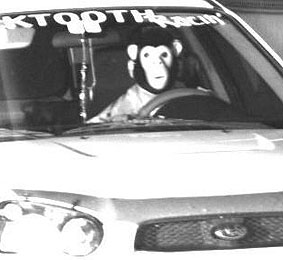

|
If you ask me it sounds like it "is all about money"!
I wonder if people could use the name "none" when registering a car and say they are taking the 5th to avoid being nailed for future photo radar tickets. Same for getting a drivers license. Use the name "none" and say you are taking the 5th in advance so they can't nail you for future photo radar tickets. In both cases you argue say you are willing to pay the registration tax and drivers license tax but were taking the 5th on giving our your name! Typically, the DPS uses driver's-license photos and vehicle registration to confirm the identity of motoristsEven better can you get a Social Security number using the name "none" to keep the cops from tracking you down?
Fewer paying speed-camera tickets But DPS is on lookout for so-called frequent fliers, drivers who flout the system by JJ Hensley - Sept. 8, 2009 12:00 AM The Arizona Republic Dave Vontesmar hates photo enforcement. Vontesmar drives nearly 30 miles a day from his home in north Phoenix to his job at Phoenix Sky Harbor International Airport and passes through the photo-enforcement gantlet on Interstate 17, Arizona 51 and Interstate 10. But when state Department of Public Safety officers served 37 unpaid photo-enforcement tickets to Vontesmar recently, he wasn't fazed. The photos all show the driver wearing a monkey mask. "Not one of them there is a picture where you can identify the driver," Vontesmar said. "The ball's in their court. I sent back all these ones I got with a copy of my driver's license and said, 'It's not me. I'm not paying them.' " The latest data from the DPS shows more motorists are disregarding the violation notices upon arrival in the mail. When the system was just getting set up in October, 34 percent of drivers paid their tickets. By June, that statistic had dropped to 24 percent. Program effects DPS officials repeatedly point out that the success of the photo-enforcement program is not measured in revenue it generates - about $20 million for the state through the end of July - or the number of notices of violation issued. "Our whole goal is not to issue tickets, just to get people to drive the speed limit," Lt. Jeff King said. King instead prefers to focus on the program's positive effects on Arizona's highways, particularly in the Valley where fatalities, a factor that closely correlates with speed in wrecks, have dropped by 10 to 20 percent since the same time last year. His anecdotal evidence also points to drivers slowing down. [Hmmm it's not about revenue but he is pretty quick to cite the $20 million in revenue the photo radar has raised but he can't cite anything but anecdotal evidence on how photo radar is making the streets safer] "The whole purpose behind it is voluntary compliance, and (the cameras) work really good," King said. DPS statistics support the notion that the program is slowing some drivers down, too. Photo-enforcement cameras activated about 78,000 fewer times in July than in December, though King notes other factors such as the economy could have contributed to fewer drivers being on the road. King said there are plenty of people who willfully disregard the violations that arrive in the mail, generated by the 78 fixed and mobile units around the state. DPS officers target such drivers, dubbed frequent fliers, who have 15 or more active violations. King said that number could fluctuate from 100 to 600 motorists. Drivers have 30 days to respond to a notice of violation after it arrives in the mail. Motorists can either pay the fine, challenge the ticket or inform the DPS that the recipient is not the driver and return the paperwork with a copy of their driver's license. Drivers who challenge tickets could end up in Justice Court. Those who ignore the notice may be served with a hand-delivered ticket. A case in point Vontesmar, a flight attendant, chose to inform the DPS that he was not driving when confronted with the 37 violations at his job three weeks ago. DPS officials estimate the car registered in Vontesmar's name was caught by cameras more than 90 times, but time had lapsed on the majority of violations by the time officers tracked Vontesmar down. Vontesmar is confident that he won't have to pay the fines, an amount that could exceed $6,500. "It's obviously a revenue grab," he said of the program. "They're required by law to ID the driver of the vehicle. If they can't identify the driver or the vehicle by the picture, what are they doing to identify the driver?" Typically, the DPS uses driver's-license photos and vehicle registration to confirm the identity of motorists, but there is a special unit assigned to go after frequent fliers. In this case, officers sat outside Vontesmar's home and watched him drive to work. "We watched him four different times put the monkey mask on and put the giraffe-style mask on," Officer Dave Porter said. "Based on surveillance, we were positive that Vontesmar was the driver." Porter said that it would be up to justices of the peace to determine what to do with Vontesmar's tickets, but the officer said there is enough evidence to reissue the tickets in Vontesmar's name, despite his claims that he was not the driver. Some frequent speeders cover their faces, use post-office boxes or fictitious addresses to beat the system, said Officer Jeff Hawkins, who is working 50 such cases. "They generally do it under the pretext that they're not going to be caught," he said. "These are what you probably consider as people who don't really respect the law at all." |